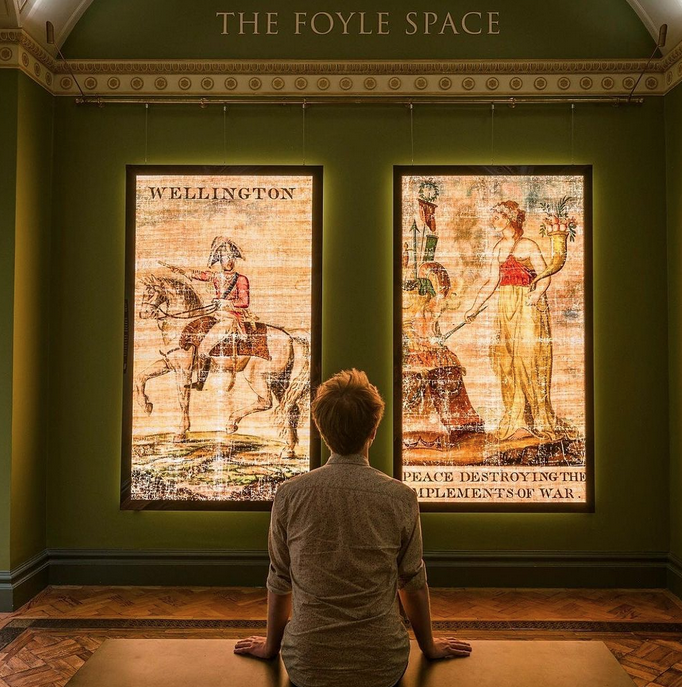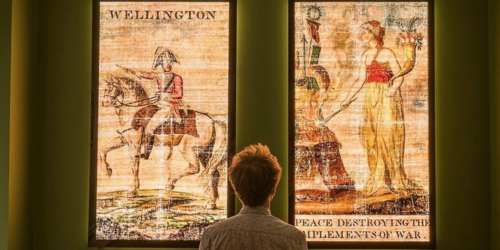
Over the summer we worked to conserve two extraordinarily rare and ephemeral textiles known as Illuminations or Transparencies. Privately owned, they were conserved for the exhibition ‘Georgian Illuminations’, currently showing at the Sir John Soane’s Museum until 7th January 2024. Dating from the early 19th C these hand painted cloths were temporarily tacked inside the windows of large houses and lit from behind so that the images could be seen and enjoyed from the street at night. They formed part of the enticing nightlife in the time of the Pleasure Garden tradition. The illustrative themes of the four we examined relate to events of the day (war campaigns and associated societal aspirations). Very few survive, and most of what is known about them has been gleaned from literary sources, newspapers of the day and some mentions in household accounts. The two selected for conservation and exhibition depict the contrasting figures of Peace standing firm with roses in her hair and the Iron Duke of Wellington.
Image 1&2: After delicately surface vacuum cleaning both sides of the cloths, the Illuminations were carefully cleaned further with soft polyurethane sponge to lift more of the engrained dirt. Although damaged with much loss, the paint layer was not friable and was subtly revived by this process.
Image 3: Detail of Peace.
Image 4: View to show the effect of years of being stored folded in the bottom of a box (apparently the owner’s family Christmas decorations box!). Mira worked on a gentle humidification process to relax the creases and flatten the cloths.
Image 5: Testing out the proposed display method over LED light boxes so they can be appreciated as originally intended, lit from behind.
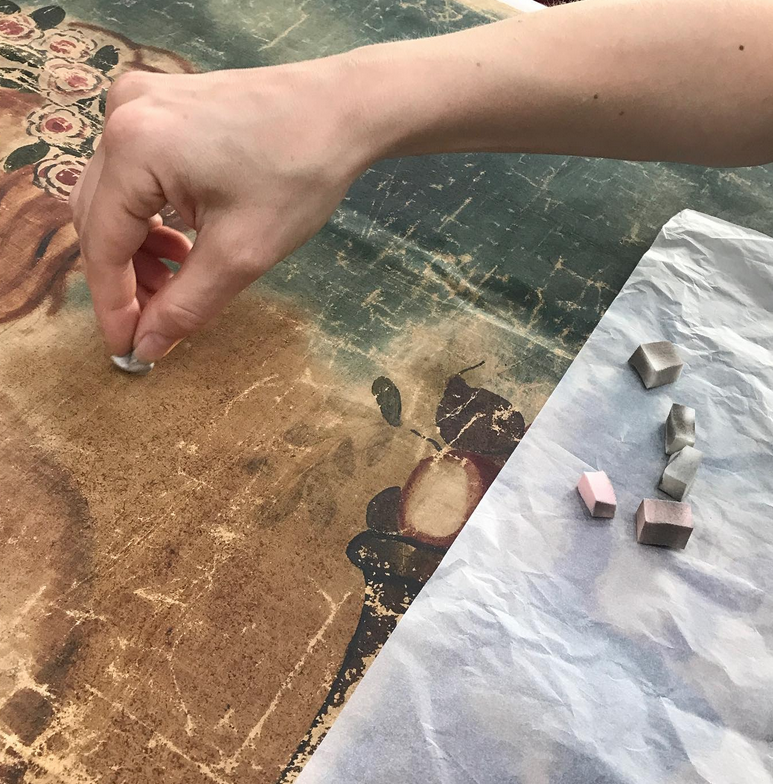
Image 1 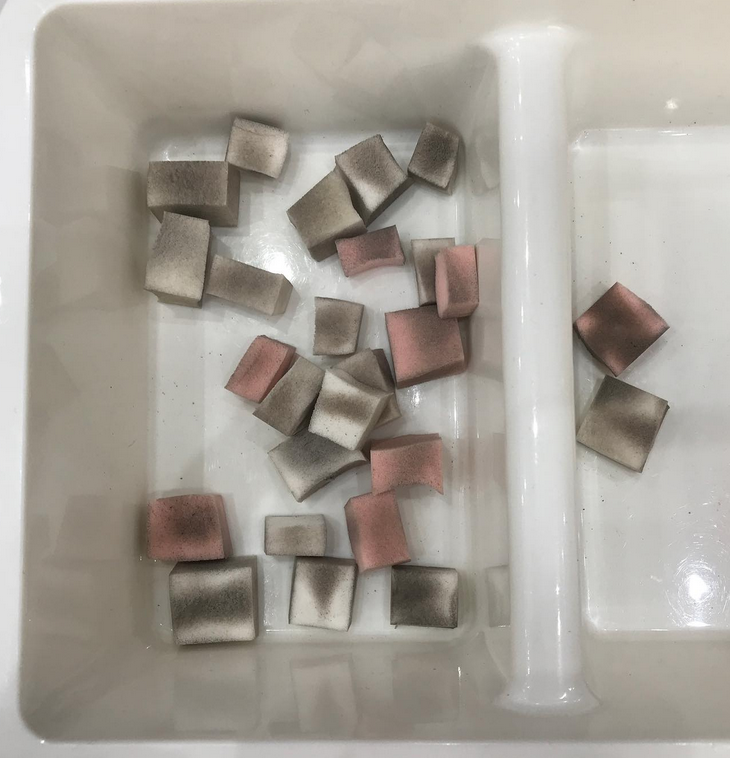
Image 2 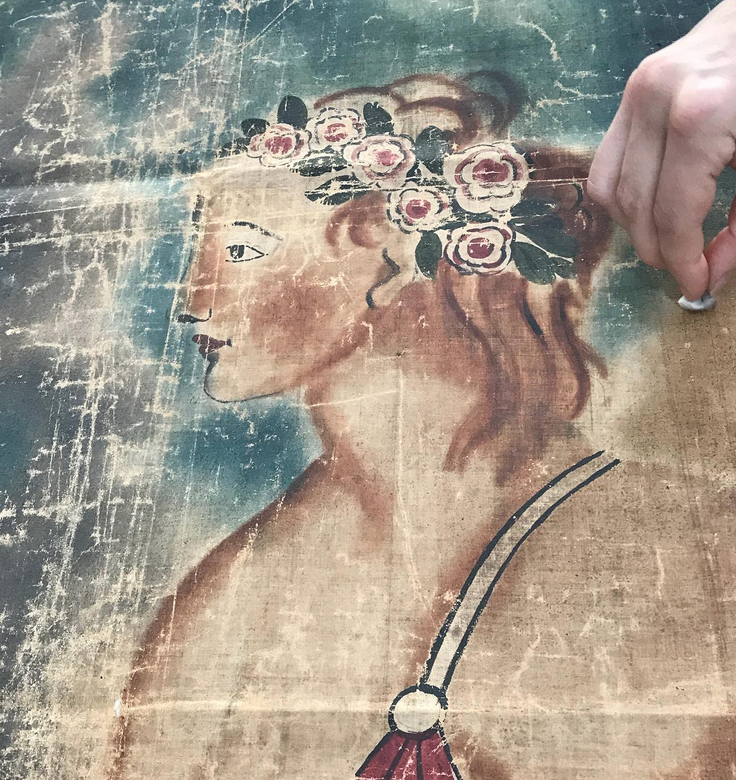
Image 3 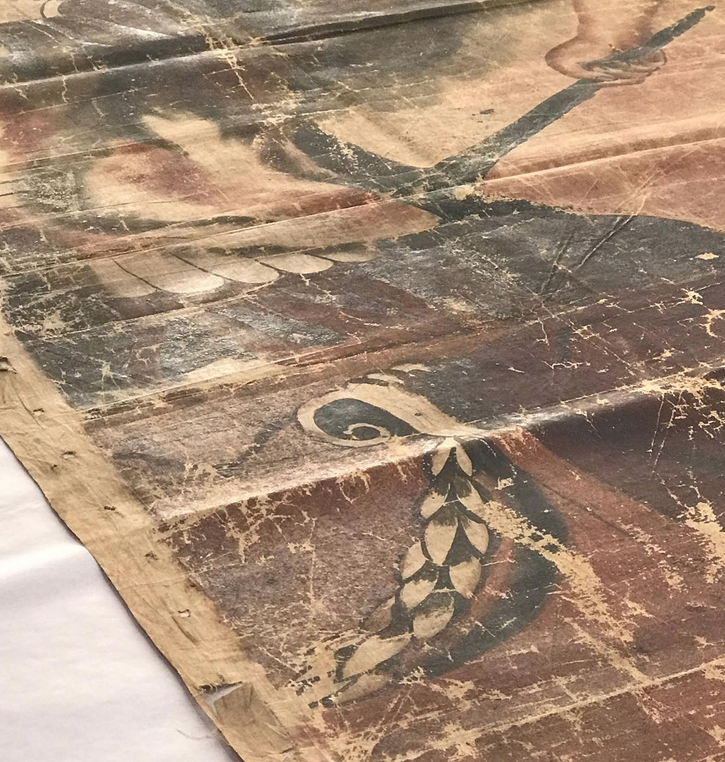
Image 4 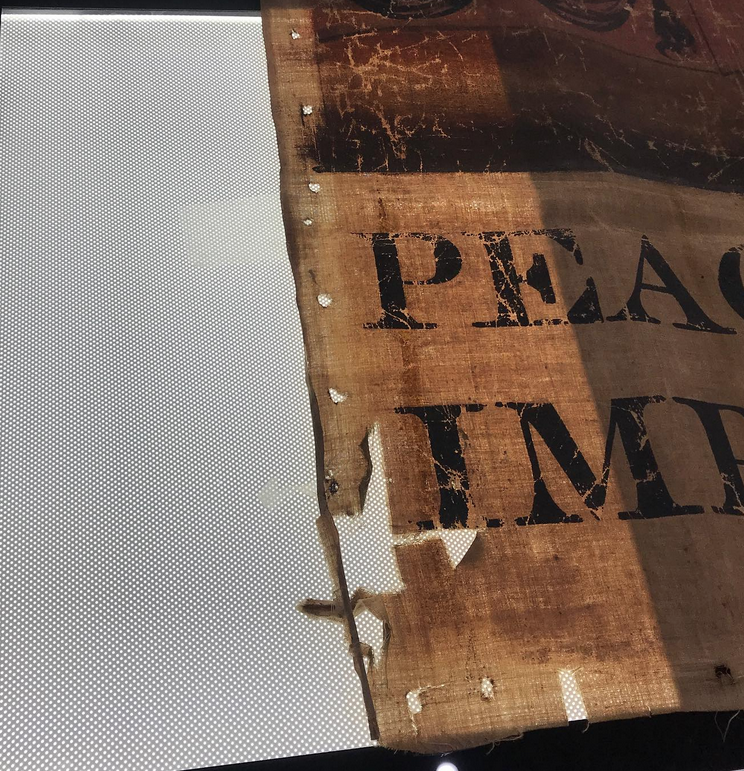
Image 5
We were able to put our new vacuum table (on generous long-term loan from local paintings conservator Sophie Reddington) to good use for this project. Images 6 & 7 show the first of the Illuminations being humidified and flattened beneath polythene after a light misting. After much testing, the conservation treatment then moved on to support the holes and damaged edges. The challenge was to find a method that would remain unobtrusive with light shining through it which is quite a tall order!
Tests showed that patches of fine Tengujo tissue remained invisible when used in combination with wheat starch paste and that the bond strength was good. So this was used by Mira who worked to support the edges whilst Geoffrey dealt with all the holes. However when viewed with transmitted light the subtlety of the Tengujo tissue alone was not enough to prevent interference from the light box when viewing. To solve this Geoff filled retouched the patches to render them slightly more opaque once they were attached to their display boards.
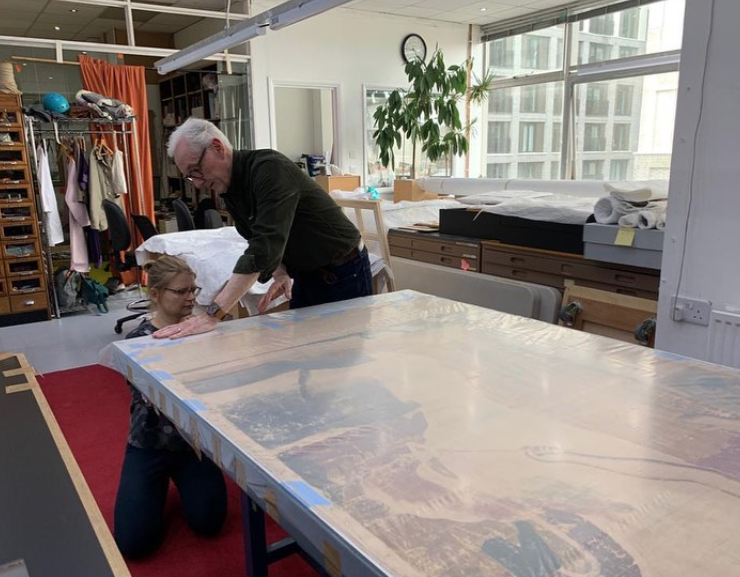
Image 6 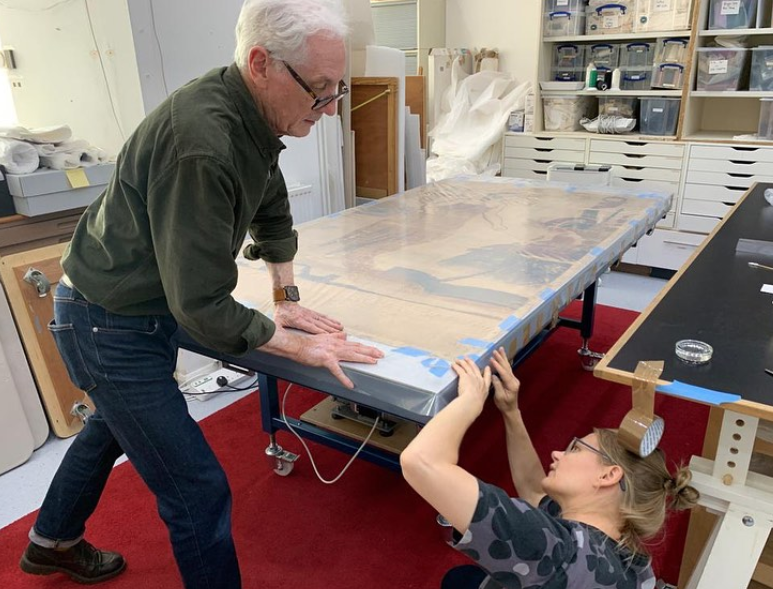
Image 7
To avoid the micro dot pattern from the LED light source interfering with the image, Opal acrylic sheet was interposed between the LED and the object; this then became the support for each Illumination. The back of the Opal acrylic was edged in card to provide anchoring strips to adhere the Japanese tissue tabs to. After misting, the delicate illuminations were carefully stretched over the acrylic wrapping the tabs around to the strip at the reverse.
Once flat and dry, Geoffrey undertook some subtle re-touching in key areas of both Illuminations (Images 8-14) as the fragile painted cloth had suffered much loss from years of repeated use, handling and folding This damage was mostly left as it was, signalling signs of past use, but because the panels were to be shown over light we had agreed with our client that some retouching of the faces of the Duke of Wellington and Peace would be necessary. This was also the case with some of the lettering.
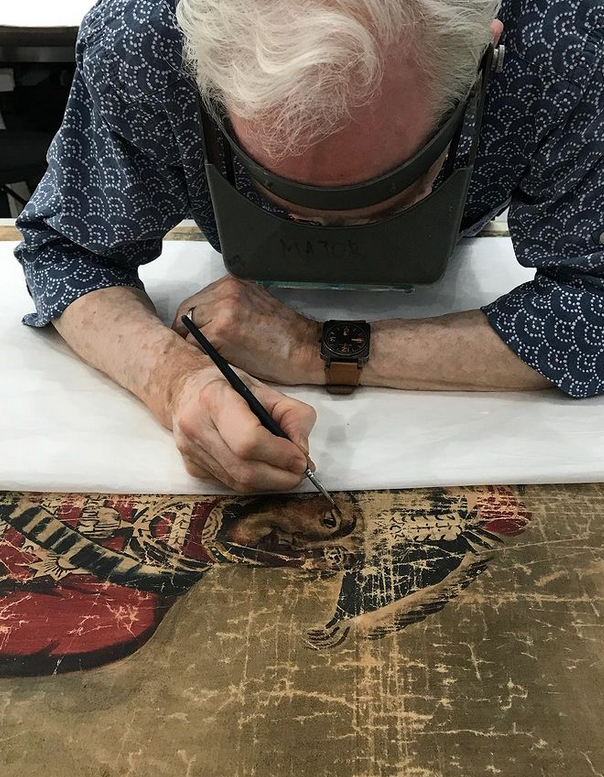
Image 8 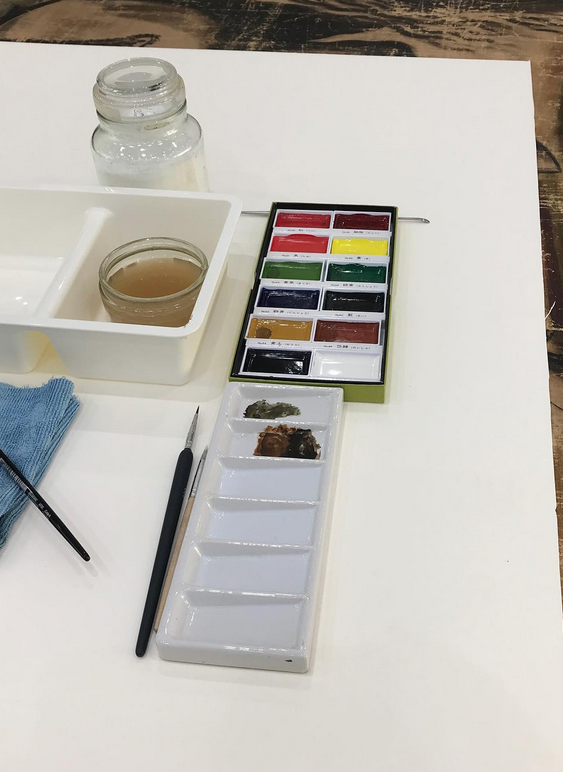
Image 9 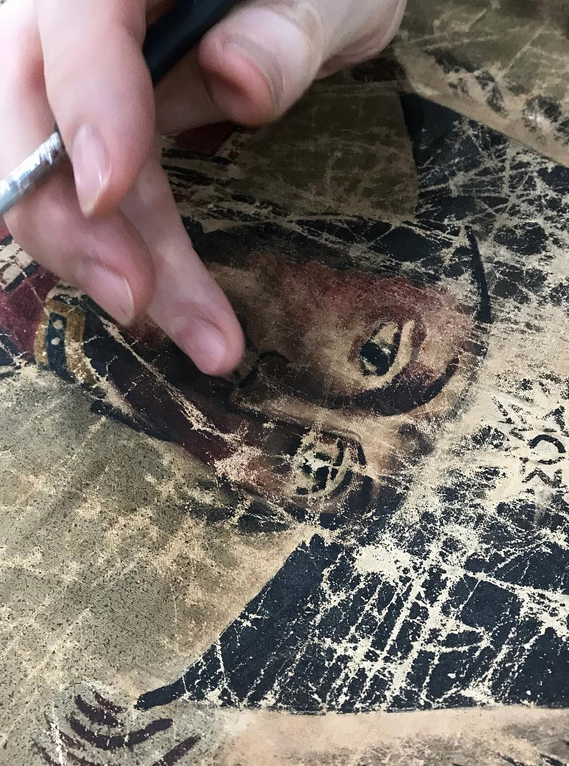
Image 10 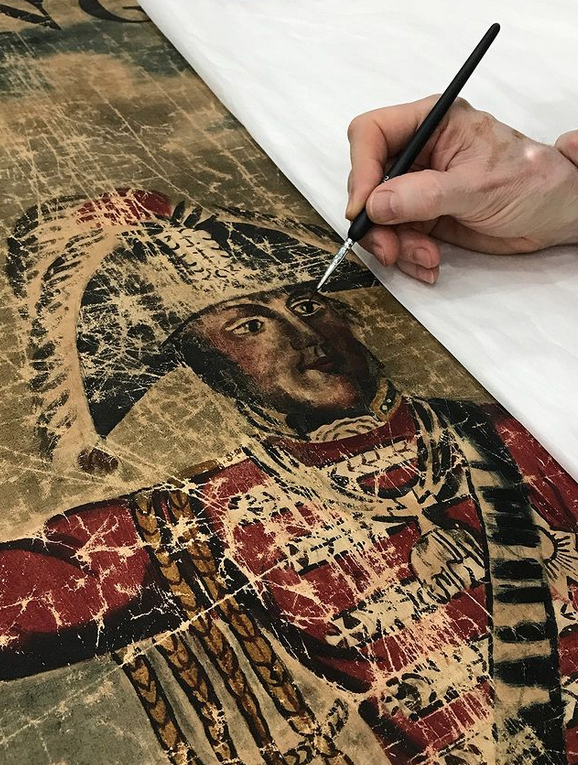
Image 11 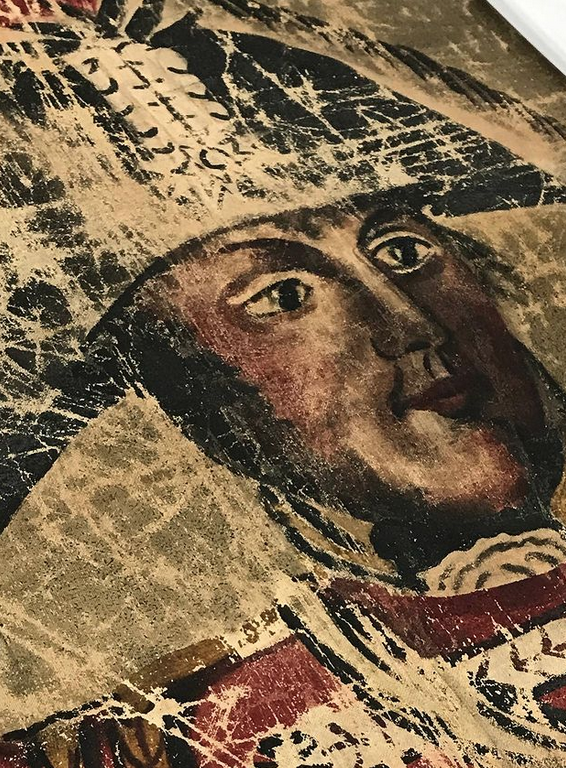
Image 12 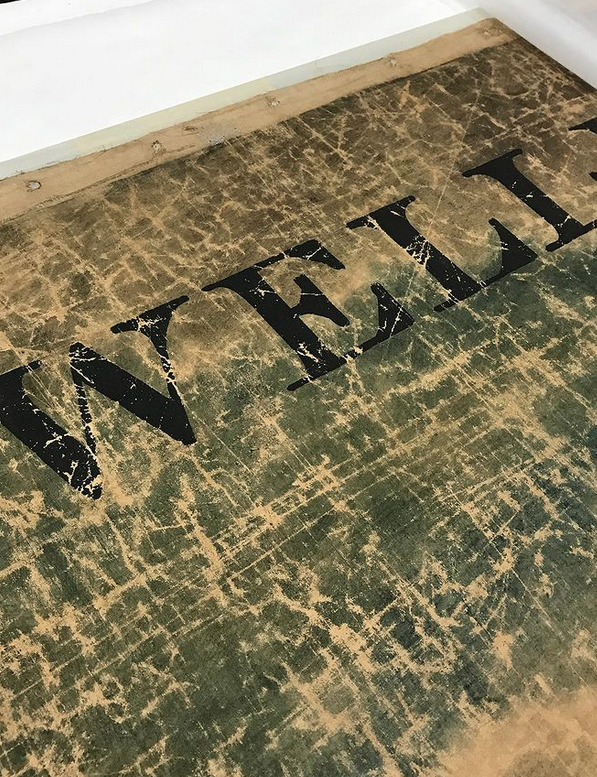
Image 13
In this series of images you can see Geoffrey carefully working to retouch loss just around Wellington’s eyes and in a few other places in his face. He used Japanese Kuretake Gansai Tambi water colour (which has a protein base), chosen because it bound well with the wax impregnated fabric but remains reversible. He also retouched the edges of some of the lettering where it had become difficult to read – this small amount of re-touching made all the difference.
The challenge to conserve these early 19th century painted textiles to be displayed over light boxes was huge as the transmitted light reveals every single intervention. In this series of images you can see the various stages
Image 15: Peace before retouching, after humidification and cleaning.
Image 16: Peace after conservation with no transmitted light.
Image 17: Peace after conservation shown with transmitted light (but with more ambient light than the exhibition space).
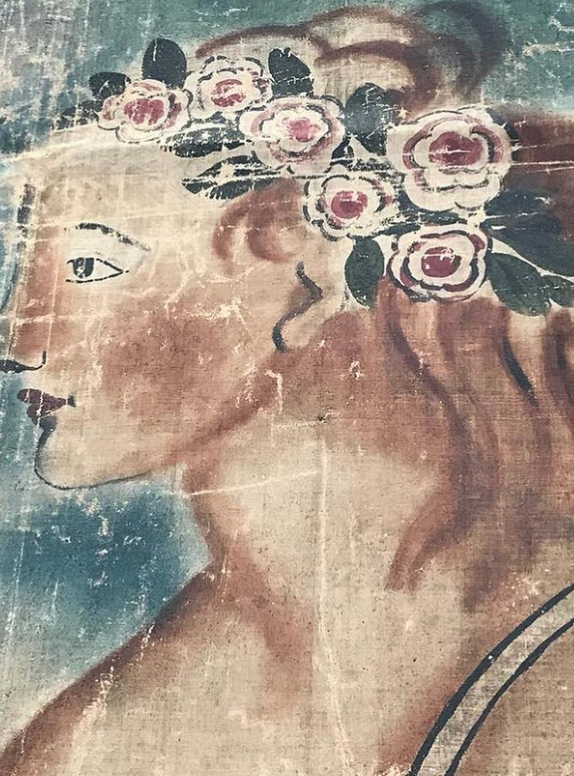
Image 15 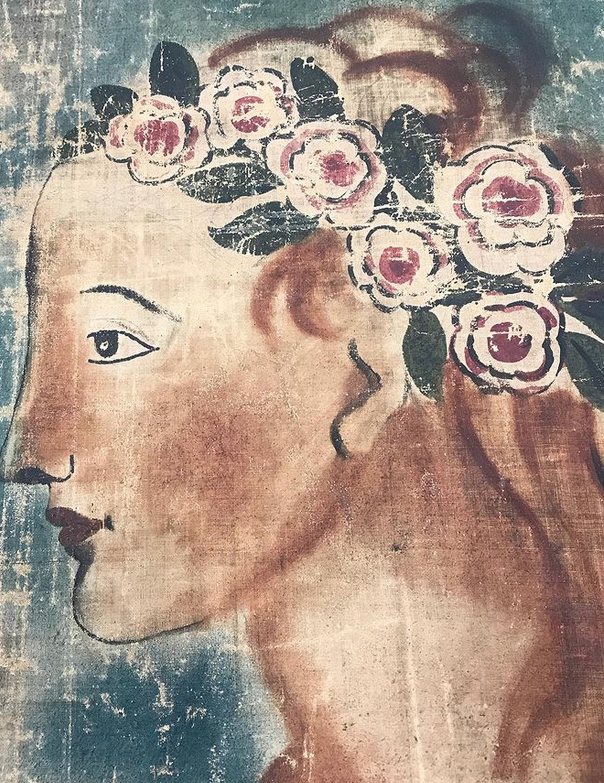
Image 16 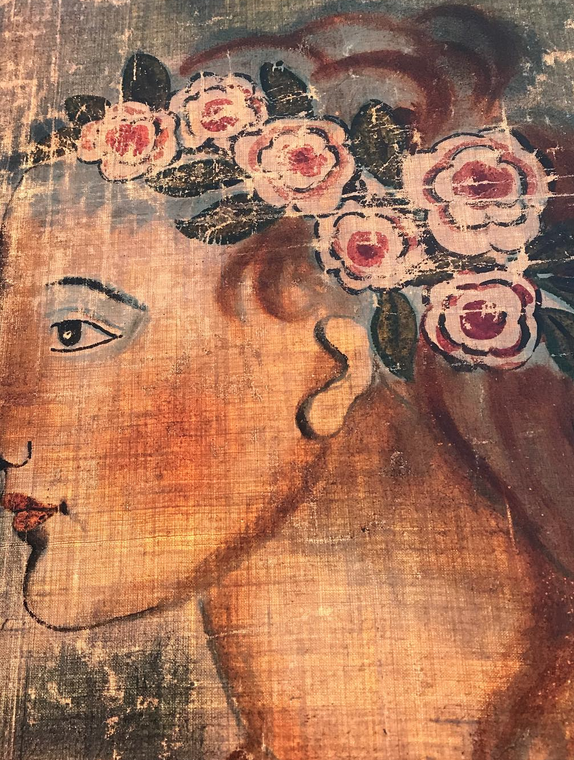
Image 17
The final images below (18-23) show the installation process and the Illuminations spectacularly on display.
Geoffrey worked closely with light box manufacturer Addlux to create a display solution that is safe for these rare objects whilst presents them as they would originally have been seen. The use of Opal acrylic sheet as a temporary support proved a successful solution to obtaining completely even illumination whilst at the same time providing a semi rigid support for both objects whilst on display.
For the duration of the exhibition, the museum itself is also illuminated each evening with a work by contemporary artist Nyan Kulkarni as a contemporary response to these historic artworks. Thank you to Head of Exhibitions Dr Louise Stewart and the rest of the team, including Sophie Persson, for all their help and for the wonderful opportunity to work on these extraordinary objects.
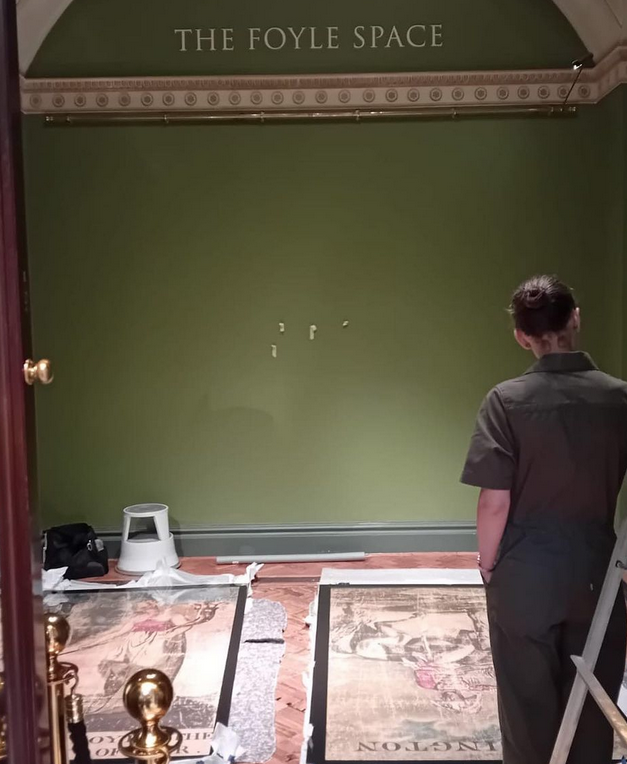
Image 18 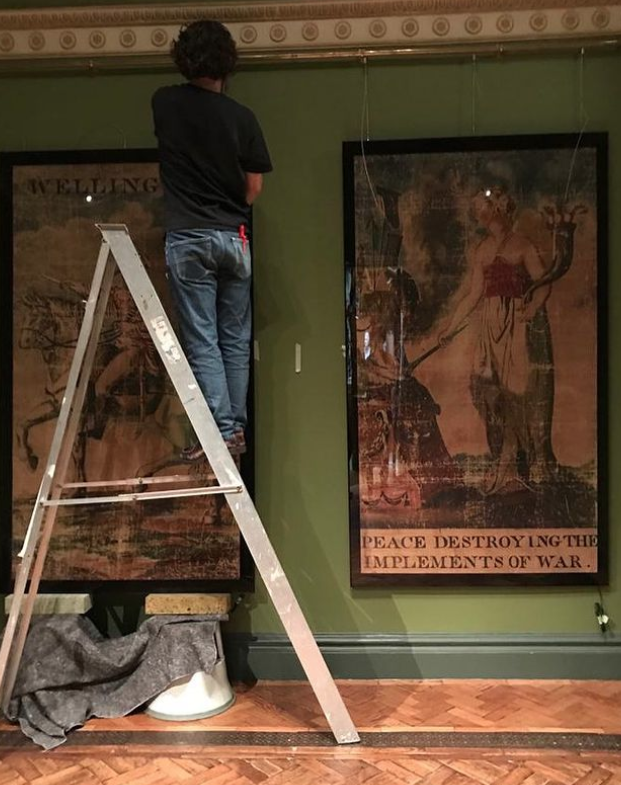
Image 19 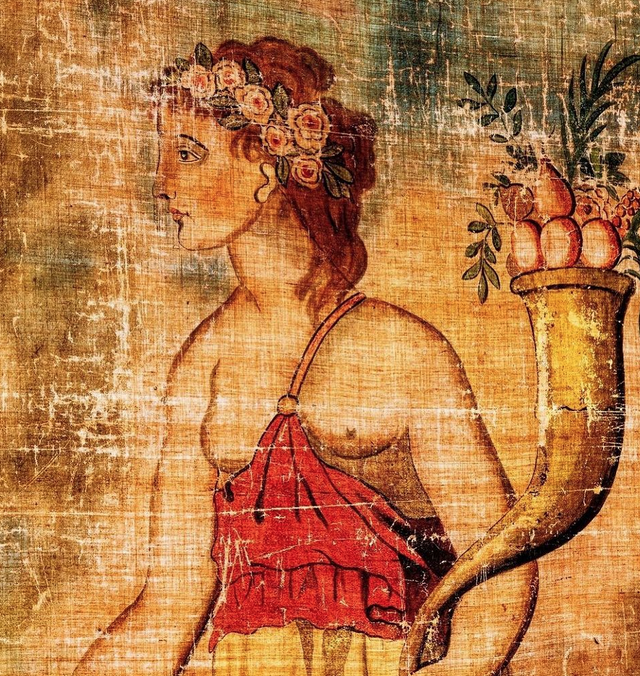
Image 20 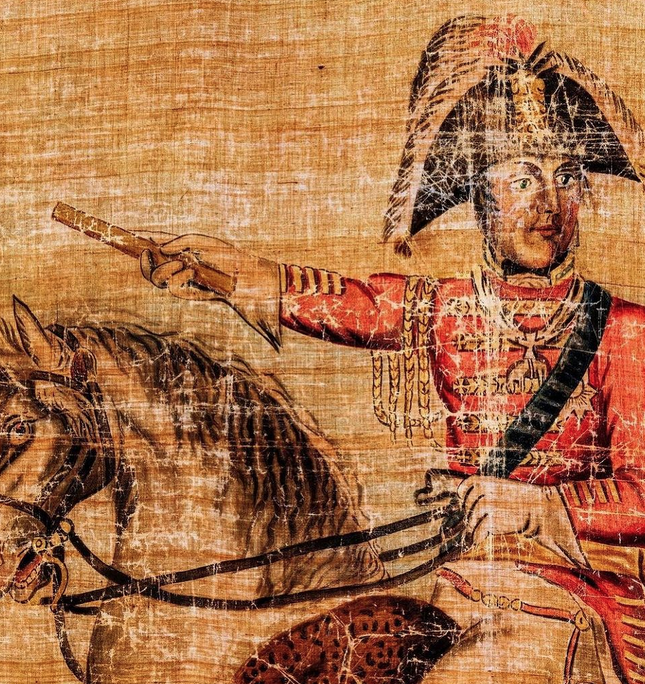
Image 21 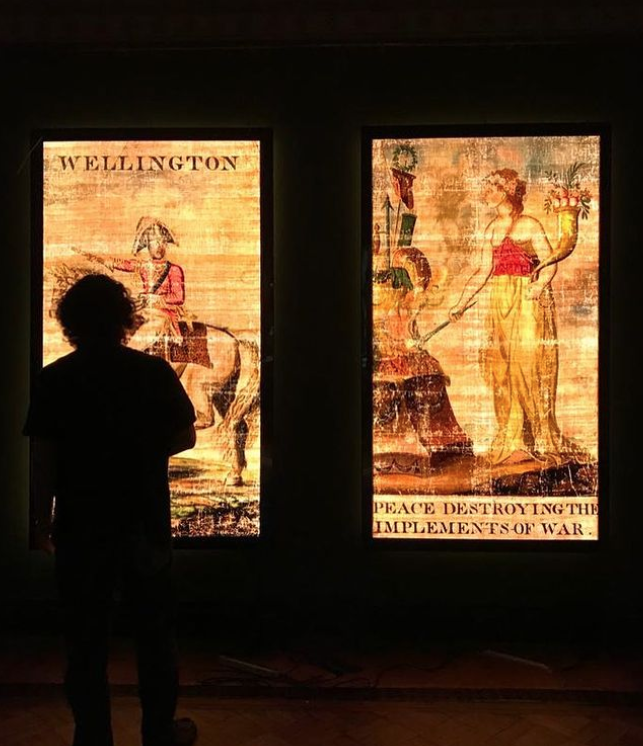
Image 22
